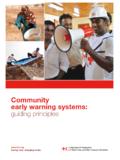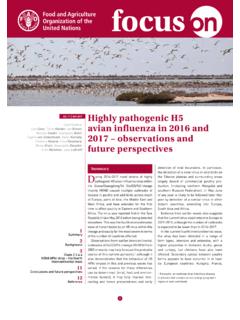Transcription of Title: Space-Based System for Short-Term Earthquake ...
1 1 Title: Space-Based System for Short-Term Earthquake Warning Primary Point of Contact (POC) & email: Mohammed Khalil Ibrahim & Co-authors: Sultan Hassan Al-Sultan, Qassim University, Saudi Arabia Organization: University of Petroleum and Minerals, Saudi Arabia Please check the brackets and delete if there is no need of checking. We apply for Student Prize. X Please keep our idea confidential if we are not selected as finalist/semi-finalist. Need The mitigation of Earthquake damage and loss of life remains of great concern. It is argued that we can expect fatalities from a single event of more than 1 million [1] in the next century. Economic impact can be enormous. It is estimated that the recent Earthquake in Sendai, Japan caused about $265 billion in damage and while much of that would have been unavoidable, many lives would have been saved and much secondary damage avoided if an early warning System had been in place [1].
2 Currently no reliable Space-Based early warning System has been developed for such application. Mission Objectives The objective of the proposed mission are: 1. Provide real time data of well know Earthquake precursors related to Lithosphere-Atmosphere-Ionsphere (LAI) coupling phenomena for earthquakes of Magnitude 5 or higher. 2. Develop and validate theoretical models addressing the Short-Term (1-5 days) Earthquake precursors. 3. Possible integration with the ground-based early warning and monitoring systems. 4. Identify the source of the precursors variations (whether it is due to seismic activity or it is of solar and magnetosphere origin. 5. Prompt international collaboration with nations of active seismic activities ( Japan, Latin American Countries, ..etc) Concept of Operations It has been reported over the past two decades strong evidence of lithosphere-atmosphere-ionosphere (LAI) coupling effects associated with seismic activity, particular as precursors to earthquakes.)
3 The LAI coupling effects could allow the development for reliable Short-Term Earthquake early warning System . This coupling is so complex and registration System of prescribed spatial and temporal resolution needs to be developed in order to have a 2 reliable prediction of the Earthquake event. The effect of LAI coupling can be monitored using either ground-based or Space-Based System each of which can monitor specific parameters. Figure 1 shows the LAI electrodynamics and the measurement that can be made with both the ground-based and Space-Based systems. Eventually, the two systems should be in operation in order to develop reliable prediction technique for Earthquake early warning System . In this proposal, Space-Based System is considered. In this System , a constellation of micro-satellites will be employed to provide reasonable spatial and temporal resolutions for a number of parameters which is linked with LAI coupling.
4 The payload onboard the micro-satellite will provide the measurements for the following parameters - Ionosphere precursors registration using topside sounder and mass-spectrometer (Critical frequency, ionization profile, TEC, ion composition and electron temperature) - VLF emission registration - Thermal precursors registration. - Measurement of DC electric field. - Measurement of Magnetic Field. Ground stations should be place in location to minimize data latency and processing. Figure 1. A schematic of the Lithosphere Atmosphere Ionosphere electrodynamic coupling [1]. Key Performance Parameters The key performance parameters are: - Mid/Low Wavelength Infrared Cameras - Topside sounder for vertical profiles of electron concentration - Mass-spectrometer for ion composition at the satellite orbit altitude (about 700 km) - VLF wave complex 3 - DC Electric Field and Magnetometer - Steerable S-Band antenna Space Segment Description The Space-Based System consists of constellation of four micro-satellites in sun-synchronize orbits with orbits distributed equally in longitudinal (or in local time).
5 It is well known that within the 5-day interval before the seismic shock the precursors can appear every day [2]. It was shown by Pullinets et al. [2] the duration of any precursor lasts nearly 4 hours. Therefore, the four-satellites constellation should cover the 24 h of Local time of target area(s) and could register any deviation in any of the precursors. A Micro-Satellite of mass less than 50 kg is proposed in this mission for a mission period of 2-3 years. The attitude control stability per axis has to be within /s and the position accuracy has to be within 70 m. The peak power consumption is about 100 watt Orbit/Constellation Description Four-satellites in sun-synchronize orbits constellation that cover the 24 h of Local time of target area(s) and could register any deviation in any of the precursors.
6 The orbits distributed equally in longitudinal (or in local time). In principle it is enough to have the high inclination obit of about 83o at an altitude of 600-700 km. Implementation Plan The total project life cycle is about 7 years, four years for development, testing and deployment and three years for operation. Funding through metrological governmental agencies is expected. References [1] Vitaly Chmyrev, Alan Smith, Dhiren Kataria, Boris Nesterov, Christopher Owen, Peter Sammonds, Valery Sorokin, Filippos Vallianatos, "Detection and monitoring of Earthquake precursors: TwinSat, a Russia UK satellite project", Advances in Space Research 52 (2013) 1135 1145 [2] S. A. Pulients, "Space Technologies for Short-Term Earthquake Warning", Advances in Space Research, 37 (2006), 643-652.









